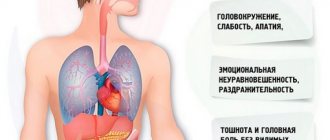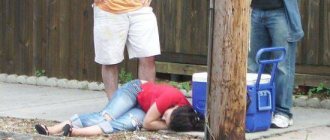Causes of stupor
Psychiatrists say that sometimes the stupor goes away on its own, so there is no need to undergo treatment. It is dangerous when the condition leads to a panic attack, during which the child suddenly begins to scream, runs away somewhere, throws all surrounding objects, and behaves inappropriately.
The main cause is depression. It can be triggered by a strong emotional shock - a disaster seen, the loss of a loved one, as well as problems at school. For example, quite often a child falls into a stupor when he is called to the board or during an exam.
Types of stupor
"Waxy flexibility"
In addition to the fact that the child stops moving, he maintains the same position for a long time. May freeze with a raised arm or leg. In some situations, Pavlov's symptom appears: lack of response to a normal voice and response to a whisper. Sometimes a child gets up suddenly at night, starts walking, and starts telling something.
Negative view
When they want to help the patient get out of his stupor, change his posture, he begins to resist. The patient cannot be lifted or put back to bed. The child also resists when he is brought into the doctor’s office; he actively runs away and screams. When the doctor begins to extend his hand to the child, he begins to hide his own, and may also close his eyes and turn away.
Muscle numbness
The child assumes the intrauterine position, strongly tenses his muscles, stretches his lips forward and closes his eyes. In this case, children completely refuse to eat. The doctor decides whether to administer food through a tube. To get out of such a stupor, amytalcaffeine disinhibition is used.
Depressed look
In addition to immobility, the child has a pained face. He answers questions monotonously and without emotion. Sometimes the patient can suddenly jump up and begin to harm himself: he wants to break his head, tear his clothes, and swings on the floor. Please note that such stupor is most often characteristic of a severe form of endogenous depression.
Apathetic appearance
The child lies on his back and stops reacting to everything that happens. He practically does not answer questions, and his appetite and sleep are disturbed. Such stupor is characteristic of symptomatic psychosis and encephalopathy.
Catatonic appearance
Stupor appears after severe fright or fear. Psychotherapists explain this condition as “loss of self.” In this case, the patient does not realize whether he is alive. How to bring a child out of a catatonic stupor? It all depends on the specific situation. One can easily come out after contacting him. And another child will be helped by breathing techniques and physical exercises.
Pathogenesis of the development of catatonic stupor
The pathogenesis of the development of catatonic stupor is practically unknown. In the course of studies conducted by psychiatrists and neurologists, several mechanisms were identified that contribute to the formation of pathology.
These include:
- disruption of metabolic processes occurring in the thalamus and frontal lobes (typical of chronic catatonic stupor);
- activation of the serotonergic and cholinergic systems that arose against the background of abrupt cessation of clozapine;
- massive rapid blockade of the pituitary hormone;
- increased activity of an amino acid that excites neurons;
- disruption of metabolic processes occurring in brain tissue.
Stupor often develops against the background of gamma-aminobutyric acid deficiency. In this case, medications that accelerate the synthesis of GABA are effective. Taking antipsychotic drugs that selectively inhibit dopamine during catatonic stupor is strictly prohibited. This will lead to a worsening of the patient's condition.
Getting out of the stupor
Psychotherapists draw our attention to the following methods:
- Acupressure. It is necessary to massage the points located above the pupils, starting from the eyebrows and ending with the hairline. The points are massaged with the pads of the thumb and index finger.
- It is necessary to evoke any emotions, even negative ones. In severe cases, it is recommended to use a slap.
- Bend the child’s fingers and press them firmly into the palm, while not touching the thumbs.
Treatment of stupor in children
In severe cases, treatment in a hospital setting is required. To determine the nature of stupor and disinhibition, caffeine barbamyl is used. Using this product you can restore your child's appetite. First, 2 ml of a 20% caffeine solution is injected, and then after 5 minutes, 10 ml of a 510% solution is slowly injected, while the doctor monitors the child’s condition. If he feels better, he immediately stops the infusion.
For catatonic stupor, the drug Frenolon is used, which is administered intramuscularly. Sometimes the psychostimulant drug Sidnocarb is prescribed. In case of stupor with hallucinations, delirium, Trisedal and Stelazine are prescribed. Does your child have depression? Doctors decide on the use of Melipramine. And for psychogenic stupor, Relanium is prescribed.
Attention! In case of severe somatic illness, it is very important to get the child out of his stupor as quickly as possible. In this case, he is hospitalized in a psychiatric clinic.
Reasons for the development of catatonic syndrome
The causes of catatonic stupor have not yet been clarified. Psychiatrists have put forward several hypotheses to help explain the etiology of the disease.
Catatonia can be triggered by:
- deficiency of gamma-aminobutyric acid in the brain;
- lack of dopamine;
- disruption of metabolic processes occurring inside the organ.
The theory associated with primitivism has a right to exist. Some scientists argue that catatonia is a subjective reaction of a person who senses imminent death. The syndrome occurs against the background of psychoses (somatic, withdrawal, intoxication, infectious, viral, organic) and schizophrenia. Stupor is diagnosed in patients with autism.
At risk are people who have been diagnosed with tumor growth in the brain.
There is a high risk of developing pathology with:
- drug addiction (including cocaine addiction);
- vascular lesions of the brain;
- benign thrombocytopenia;
- mental disorders after childbirth;
- epilepsy.
Catatonic stupor also develops against the background of severe diseases of infectious etiology.
Complications
The condition is dangerous because it can result in sudden impulsive agitation, as well as suicide. For preventive purposes, it is necessary to provide timely assistance to the child.
Thus, if your child begins to become increasingly self-absorbed, he reacts painfully to stress, or something has happened to him, do not waste time. Your child needs urgent help from a psychiatrist, do not take it to extremes. It is also important to prevent stupor in a timely manner; to do this, communicate with the child, find out about his problems, and do not allow him to keep everything to himself. Only trusting relationships and a calm family atmosphere can help protect against dangerous mental conditions and diseases.
Treatment of catatonic syndrome with drugs
A patient with suspected catatonic stupor must be hospitalized. In some cases, they are transferred to the intensive care unit for ongoing care and monitoring of the functioning of internal systems. Drug therapy includes benzodiazepine drugs. The principle of their action is based on stimulation of the neurotransmitters aminobutyric acid.
The active ingredients reduce its activity. Medicines have a hypnotic, calming effect, reducing the degree of excitement and relaxing muscle tissue. Such drugs are characterized by a moderate anticonvulsant effect. Organic catatonia can be treated with benzodiazepine drugs.
Some patients are drug resistant. They are prescribed electroconvulsive therapy. The method is actively used to treat various mental illnesses, including schizophrenia, hysterical and idiopathic catatonia, and depression. The method is considered quite radical - it helps to increase the concentration of dopamine.
Drugs effective for catatonia:
| Name | Release form and composition | pharmachologic effect | Contraindications | Instructions |
| Finlepsin | It goes on sale in tablet form. The main component is carbazepam (no more than 200 mg). | Analgesic, antidiuretic, antipsychotic, antidepressant. | Concomitant use with MAO inhibitors, atrioventricular blockade, intermittent acute porphyria, blood diseases, intolerance. | The initial dose is 400 mg. with the doctor's permission it is increased to 1200 mg. |
| Risperidone | Release form: tablets. The main component is the substance of the same name (1, 2 or 4 mg). | Sedative, antiemetic, antipsychotic. | Glaucoma, seizures, pregnancy, heart failure, childhood, Parkinson's disease, prostatitis. | The therapeutic norm is 4-6 mg, which is equivalent to 1, 2, 3 or 6 tablets. |
| Amantadine | It goes on sale in tablet form. The active ingredient is amantadine (10 mg). | Antiparkinsonian, antiviral. | Lactation, pregnancy, prostatic hyperplasia, glaucoma, thyrotoxicosis, epilepsy. | The initial dose is 10 mg. the maximum daily intake is 40 mg. |
| Dantrolene | Release form: solution, capsules. The main component is the substance of the same name. | Antiepileptic, antidepressant, antisclerotic. | Pregnancy, childhood, heart, kidney or liver failure, intolerance. | Solution – 1 mg/kg, capsules – 5-8 mg/kg. |
| Diazepam | It goes on sale in the form of a solution and dragee. The active ingredient is diazepam (5-10 mg). | Anxiolytic, hypnosedative, muscle relaxant, tranquilizing. | Pregnancy, angle-closure glaucoma, chronic hypercapnia, myasthenia gravis, liver/renal failure, hypersensitivity. | Solution (i.m., i.v.), tablets – up to 15 mg/day. |
| Lorazepam | Release form: solution, tablets. The main component is lorazepam. | Anticonvulsant, anxiolytic, muscle relaxant, sedative, hypnotic. | Lactation, sleep apnea, pregnancy, respiratory failure, myasthenia gravis, glaucoma, hypoproteinemia. | The daily norm is 5 mg. |
Catatonic stupor is treated with muscle relaxants. In this condition, the patient is prescribed medications that support the functioning of the digestive tract. Psychotropic medications are available with a doctor's prescription.










